How to iron long and short sleeved shirts correctly?

A neat appearance is considered the standard of beauty. In order for the clothes to originally emphasize the image, it is necessary to be able not only to select its appropriate style, but also to give the desired shape by ironing. This is especially true for shirts with long sleeves, because it is not easy to bring them to perfect condition and you need to have certain skills.

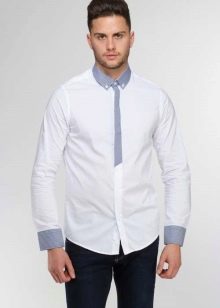
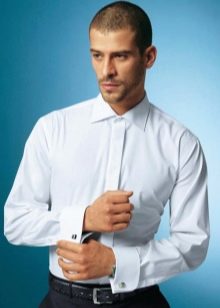
Ironing devices
Today, there are many technical innovations that allow you to quickly and efficiently iron men's or children's shirts with long sleeves. The simplest and most inexpensive device is an iron, it has a steaming function and a selection of the desired temperature regime. In addition, for ironing, it is also advisable to prepare a special ironing board and a spray bottle, which is useful for moistening too dry fabric. If the product is planned to be steamed, then it is important to ensure that the water is filtered and clean, in particular, this applies to light-colored shirts.
In the event that there is no ironing board, it can be replaced with a table.
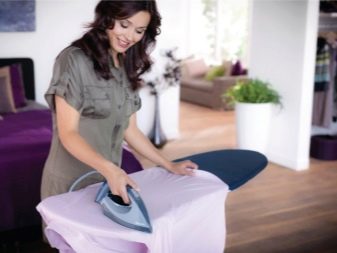
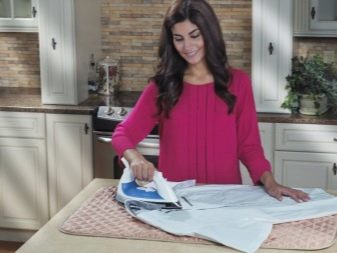
Before you start ironing clothes, cover it with a thick cloth. The attachment for ironing sleeves will also help to facilitate the workflow. For certain types of shirts, you will also need a white cotton towel. It will serve as a comfortable backing and will help prevent water stains. In addition to traditional irons, the following devices can also be used.
- Steamer. Its principle of operation is based on the creation of powerful streams of steam, which not only give things an impeccable look, perfectly cope with all folds and irregularities, but also eliminate odors from the fabric, disinfecting it.The main advantage of this technique is considered to be that it provides vertical ironing without a table or board. As for the disadvantages, the steamer cannot completely replace the iron, since it is not suitable for certain types of fabrics.
- Steam generator. Externally and in terms of functionality, it is in many ways similar to an iron, but differs from it in that it produces a powerful and uniform stream of steam. Thanks to this quality, even heavily wrinkled shirts can be smoothed out with the help of the steam generator.
- Steam dummy. This is an inflatable device that is shaped like a human torso. It smoothes and dries quickly. However, such equipment is professional, so it is rarely found in household use.


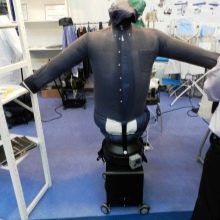
Iron modes
Each type of fabric is characterized by its own ironing temperature. Therefore, this feature is important to consider before you start ironing shirts and carefully study the instructions on the label. If the composition from which the fabric is made is unknown, then the ironing process should be performed at a minimum temperature. As a rule, irons are sold with a temperature setting from 1 to 3. This makes it easier to select a particular temperature for a particular type of fabric.
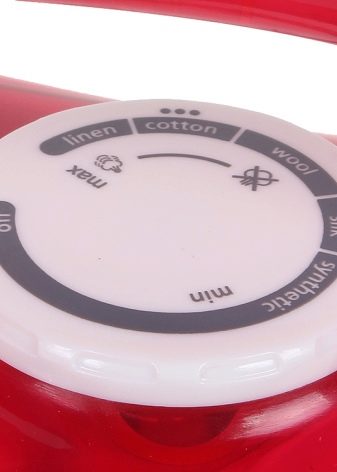
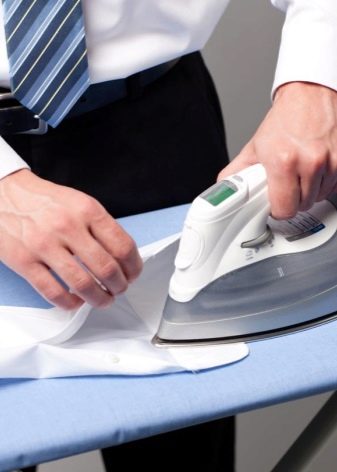
Often shirts are made of synthetics, you need to be careful with this material, otherwise they can be burned at high temperatures. To prevent this, it is recommended to start work with a minimum temperature. If the wrinkled areas are poorly smoothed, the temperature should be slightly increased and as soon as the iron stops sliding smoothly, the mode is immediately reduced. In addition, for each type of fabric there is a set ironing mode, it looks like this.
- Polyester. It is a man-made material and cannot be ironed above 110.
- Reaper. Shirts made of such fabrics look without steam at a mode of up to 110.
At higher temperatures, their material can completely flatten out and lose its attractive appearance.
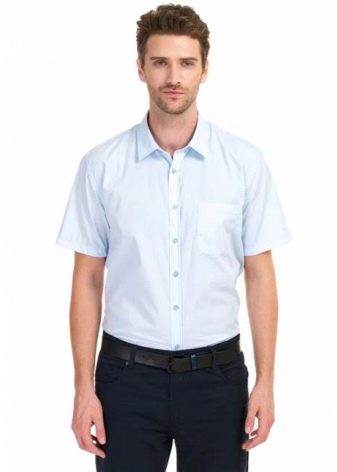
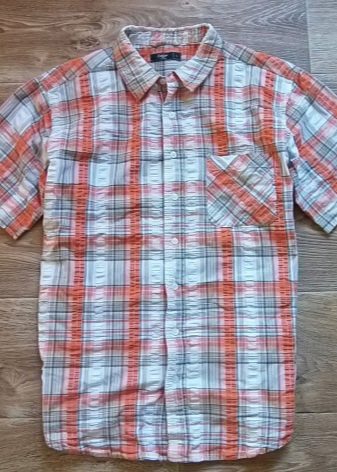
- Viscose. Able to withstand ironing up to 120, it is also subject to steam treatment. At the same time, during the smoothing process, the fabric should not be moistened with water from the spray bottle, otherwise stains will remain.
- Natural material (cotton and linen). For ironing it requires a temperature of at least 150. Crumpled cotton shirts are best steamed at a setting of 170 to 180. As for linen, this is the coarsest material, so it requires a lot of steam. The folds can be straightened only at temperatures above 210. For ironing cotton and linen, you also need to apply strong pressure, wrinkled cotton is smoothed out without moisture.
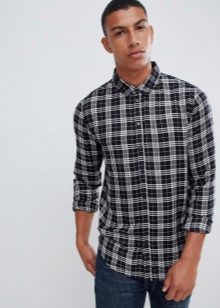

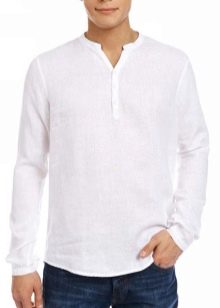
- Chiffon. Iron at 60-80, light pressure without steaming.
- Wool. This material is straightened only with strong steam, so a temperature regime of 120 is used for it. It is advisable to iron woolen products through a damp cloth (gauze).
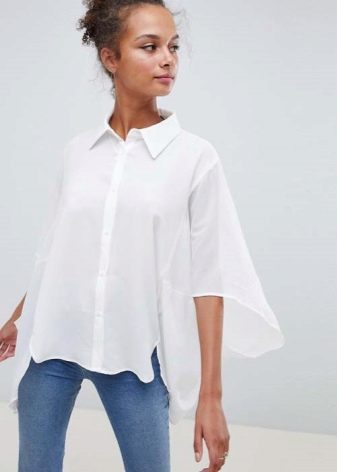

- Knitwear. Steaming is allowed at a low temperature from 60 to 80. The pressure of the iron is minimal and ironing is carried out from the wrong side.
- Silk it is advisable to iron the shirt in a dry mode, since water stains may remain on it. It is recommended to choose the minimum mode for it. Since silk products are well smoothed, it is not necessary to use steam treatment for them. In this case, it is advisable to carry out the work process from the inside out, otherwise the shirt will become glazed.


Considering all of the above features of ironing fabrics, you can quickly and beautifully tidy up any shirt. If this difficult exercise is being done for the first time, then it is necessary to perform a short training session, smoothing out individual sections of the product. Then you can start full-fledged ironing.
Preparatory stage
Despite the fact that working with an iron may seem difficult for many, it is easy to cope with it if you have patience and properly prepare.A long-sleeved shirt is considered the most difficult product in ironing, which is characterized by certain rules. This item of clothing must be washed and dried on a hanger before ironing. In this case, it is recommended to iron the shirt until it is completely dry. If it is "dry", then it should be sprinkled with water using a spray bottle, evenly distributing moisture over the entire surface of the fabric.
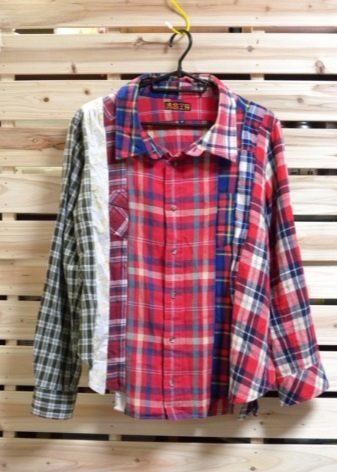
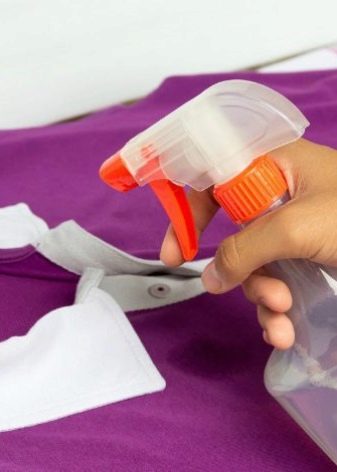
Dry shirts can also be placed in a wet bag for a while, except for this, only viscose products are considered, they may remain water stains.
Then all the buttons are unbuttoned, the workplace is prepared and the temperature regime is selected in accordance with the type of fabric. Additionally, you also need to prepare a cotton towel and damp gauze. If the shirt is going to be steamed, then you should make sure that there is clean water in the iron.
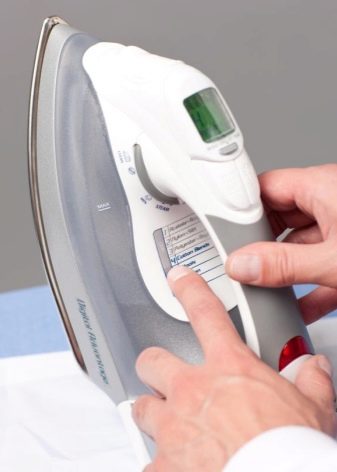

Process description
Garments, in particular long-sleeved shirts, must have a flawless and smoothed appearance without arrows. Therefore, this workflow must be treated responsibly and everything must be done step by step. For a woman, ironing is considered a common thing and she copes with it quickly; it is difficult for a man to cope with this task, especially if he is doing it for the first time. In order for the stronger sex to properly iron a shirt, in which short or long sleeves, a series of actions should be consistently carried out.
- Ironing begins with the smallest detail - the collar. Since it is always in sight, it must be smoothed well. First, you need to iron the collar from the inside out; smooth movements of the iron from the edges to the center will help to avoid the formation of folds in the corners. After the collar is smoothed from the inside out, the men's shirt is turned over and the procedure is repeated. Do not iron the collar along the fold line, as it may acquire an irregular shape, and its appearance will deteriorate.

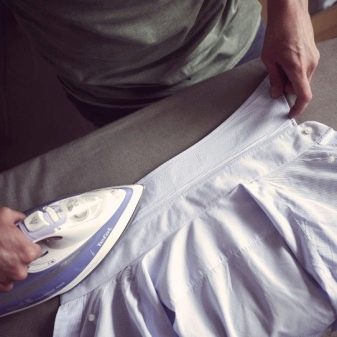
- Then you need to tidy up the cuffs. They are smoothed out similarly to the collar, but all the buttons are first unbuttoned and the fabric is carefully leveled on the board, otherwise arrows may appear. If the sleeves of the shirt have double cuffs, then they must be unfolded and then ironed out.
- The next step is to iron the front and back of the shirt. It is best to start by leveling the area where the buttons are sewn. Children's or men's shirt is evenly placed on the board and everything is ironed. In this case, special attention should be paid to the place near the collar. It is always noticeable from under the tie. After that, you can start ironing the area of the shirt where there are no sewn-on buttons.


- Next, the shoulders of the product are ironed. To simplify this process, it is recommended to put the shirt on the narrow part of the board. Thanks to this, it will be possible to quickly and easily iron the right and left shoulder without wrinkles.
In this case, you need to try to get to difficult areas using the iron spout.
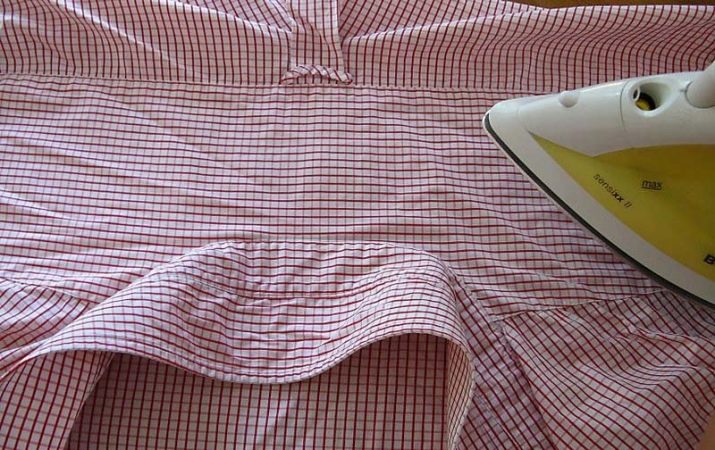
- After that, it remains to iron the most problematic area - the sleeves. It should be noted right away that long sleeves on a no-arrow shirt are a sign of bad taste. The only exception may be special requirements for the dress code, in which straight sleeves are provided. The sleeves are carefully checked and treated with steam along the entire length, then the arrows themselves are formed, having previously determined the place of the fold, which must necessarily coincide with the horizontal seam on the shoulder. Ironing is carried out from the front side, if necessary, wet gauze is used.
At the same time, for ironing sleeves, you can use the "inside-face", "sleeve-block" method, or simply use a towel - it is most often used when you need to iron a white shirt. In the first case, the sleeves first look from the inside out, then from the front side.Choosing the second method, you will have to prepare in advance a special device - "block" - and carry out the workflow from the inside out. As for the third method, it is in many ways similar to the second one only instead of a shoe, a towel wound into a tube is used.
In order for the shirt sleeves to be perfect, it is necessary to iron only clean and dried products, choosing a temperature regime on the iron that matches the characteristics of the fabric.
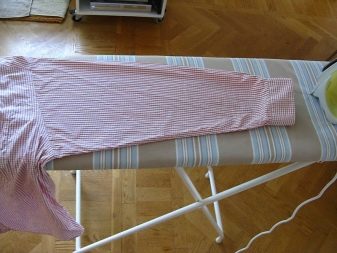
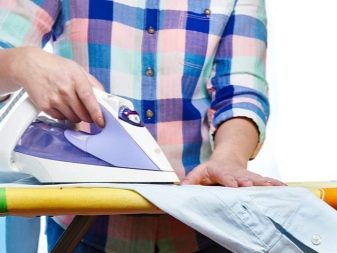
- Everything ends with steaming the neck of the shirt and ironing the back, which is the most voluminous detail. In order to iron the back evenly, the product should be placed on the board where the long edge is. The iron will move from top to bottom. First, the areas near the shoulders are smoothed, then they move to the edge. If the crumpled part remains in the middle, then it will be ironed at the very end, since it is small.
In the event that the cut of the shirt is one-piece and there are no buttons in the style, then first of all, the back of the shirt is smoothed, then its front area and sleeves. In models with buttons, special attention should be paid to the areas around the fasteners. You cannot iron over the buttons, otherwise "wrinkled" marks will remain. This also applies to products with cufflinks. The pockets are aligned from bottom to top (in the opposite direction).

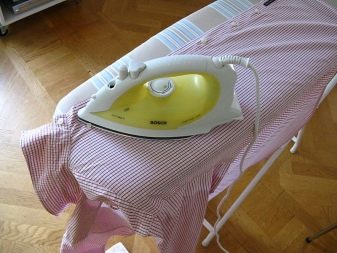
As for ironing shirts with short sleeves, they are tidied up according to the same principle as with long ones. The only relief in ironing is that there is no need to iron the sleeves and cuffs.
Short sleeves can be easily smoothed with a rolling pin wrapped in a terry towel or a special roller.
The finished shirt should be put on before hanging it on a hanger, thus, it will be possible to additionally make sure that all places are smoothed out and the work is done efficiently. If there are folds and irregularities, the procedure will have to be repeated. It should be noted that if all ironing points are performed slowly and correctly, then such problems can be avoided and a beautiful shirt can be obtained immediately after ironing.
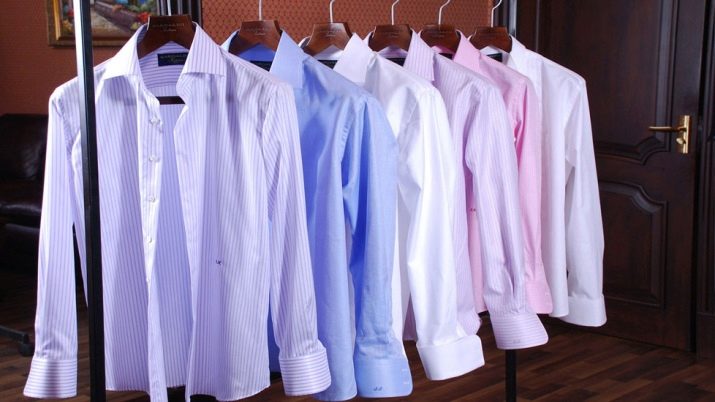
Helpful hints
For many, ironing a long sleeve shirt may seem like a whole science, because in order to iron the sleeves, cuffs, collar and steam all seams without wrinkles, it is important to have certain skills and follow the rules. Novice housewives and bachelors will help with this simple advice from experts.
- After a regular wash, any products must be dried on a hanger, in this way you can protect clothes from the formation of unnecessary folds and irregularities.
- You cannot immediately put on an ironed shirt, otherwise it will quickly be remembered.
- A damp cloth should be steamed and ironed. Therefore, after machine washing, hand washing or boiling, the item is not completely dried. As soon as there is all moisture in the glass product, you can start ironing.
- Arrows on the sleeves are made depending on personal preference and whether you plan to wear the shirt in a special setting or in the office. Usually sports models and military uniforms do not provide for the presence of shooters. If this is an office shirt, then neat and even arrows must be present in it.
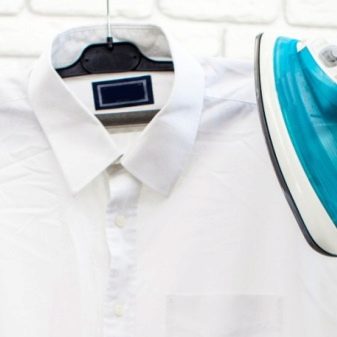
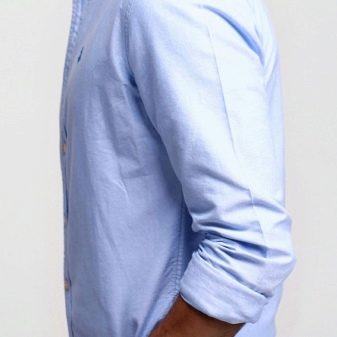
- If the product is overdried, then sprinkle it with water using a spray bottle, or place the shirt in a damp plastic bag for 30 minutes. In addition, the item can be wrapped tightly in a damp towel or gauze. For white fabrics, use a towel of light shades, otherwise staining is possible.
- Prints and decorative stickers on products are ironed from the wrong side to avoid damage to the decoration. To prevent the bright paint from being "photographed" onto the protective cover of the ironing board, it is covered with sheets of paper.
- Do not iron dirty things, as the iron will not slip well on the surface of the fabric and an unpleasant odor may form.
- If there is no ironing device in the house, or if the electrical power is suddenly cut off, and you need to go to work and look perfect, then ironing is possible without an iron. In extreme situations, the product can be smoothed well with damp hands. To do this, lay it out on a board, paying attention to especially wrinkled areas, moisten your hands with clean water and shake the fabric with quick movements of your hands. Hands should be washed with soap and water, as ink, grease and dust can transfer to the fabric.
After that, the damp line should be hung on a hanger and dried with a hair dryer.
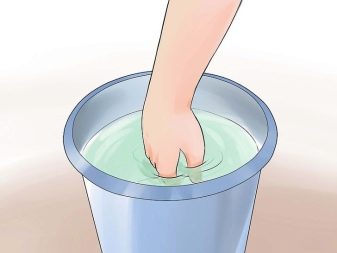
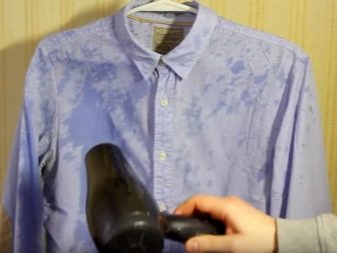
- Without an ironing device, shirts are perfectly ironed on a steam bath. To do this, the product, previously raised on a hanger, is placed in the bathroom and a hot water tap is turned on. The doors to the room are closed and the shirt begins to smooth out under the influence of streams of steam. This procedure usually takes no more than 20 minutes. In this case, it is worth paying attention to the fact that drops of water do not fall on the thing, since it is possible that new places with irregularities and spots will appear.
- You can also smooth out a man's shirt on yourself: first, you must sprinkle it abundantly with water, then put it on and dry. Body heat will quickly dry out the fabric and it will take on the correct shape. If this option is not suitable, then a special leveling solution will help to straighten the dented places. Laundry conditioner, table vinegar and water are poured into a spray can in the same ratio, everything is thoroughly shaken and sprayed onto the shirt. Drying is done outdoors, but this option is not suitable for synthetic shirts and may stain.
- If you need to iron several shirts at the same time, while some of them are dry, while others are still wet, then they need to be folded in a pile, making layers of dry and wet products. After they rest for 1 hour, you can start working.
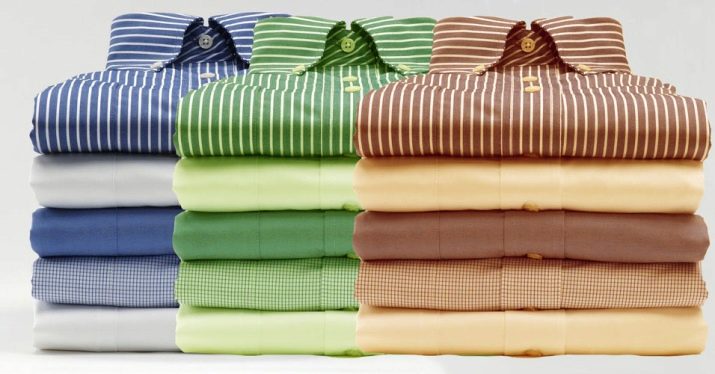
- White shirts are ironed on either side, and dark ones - only on the seamy side, otherwise they will have shiny areas from the iron.
- In the event that creases or folds have appeared on the already ironed areas, they must be moistened with water and thoroughly steamed.
- When using the steam mode, it is important to ensure that the water in the iron is clean.
- To simplify the ironing process, pre-soaking the product in a starch solution will help (1 tablespoon of starch is required for 1 liter of water). This will not only make things snow-white, allow them to quickly level, but also increase the resistance of the fabric to pollution.
- Ironing can only be started when the iron has warmed up well. In this case, before ironing, the shirt must be turned out and checked if the temperature is suitable.
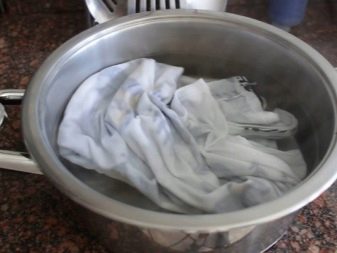
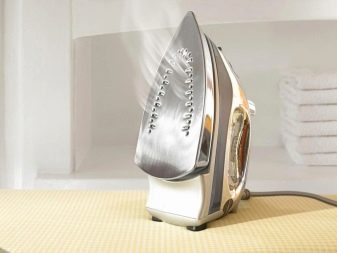
For more information on how to iron a shirt, see the next video.








